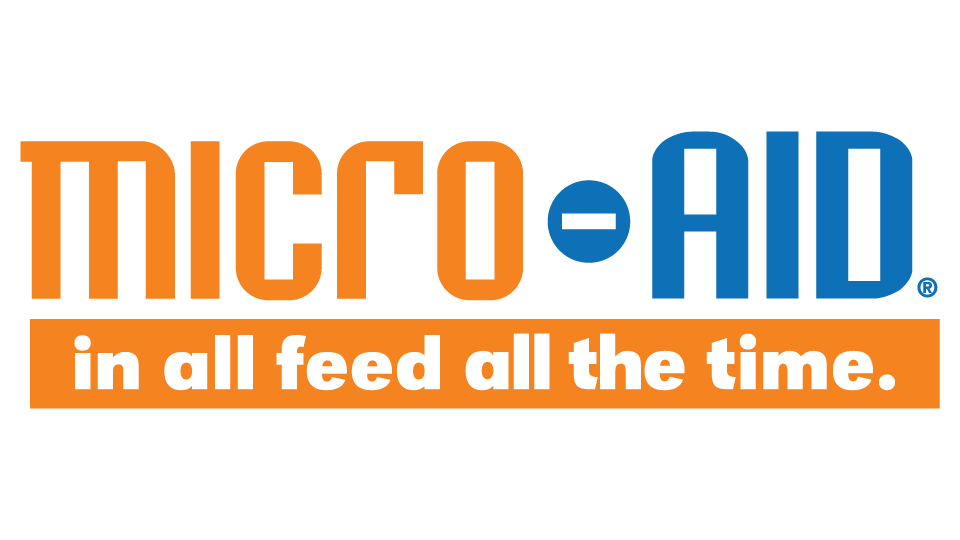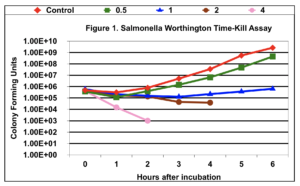
Impact of Micro-Aid® on the Bacterium Salmonella
Six serotypes of Salmonella were tested for their susceptibility to Micro-Aid® using the agar dilution test as described in the Clinical and Laboratory Standards Institute (CLSI) M31 document. The six different serotypes of Salmonella were Salmonella serotype (ser) Infantis, Salmonella ser Branderup, Salmonella ser Paratyphi, Salmonella ser Worthington, Salmonella ser Give and Salmonella ser Dublin. The minimum concentration (MIC) of Micro-Aid® required to inhibit the growth of each serotype was determined. This testing procedure has consistently provided quantitative results when Micro-Aid® has been tested against a variety of different bacterial isolates, both Gram-positive and Gram-negative, aerobic and anaerobic.
Following establishment of the MIC, a concentration-dependent killing assay (time-kill assay) was conducted against each serotype. From data generated from the time-kill assays the impact Micro-Aid had on bacterial growth was assessed.
All Salmonella serotypes tested were inhibited by Micro-Aid® concentrations of 10 mg (MIC) of saponin per mL of media. These MICS are comparable to the MICs for many other species of bacteria, e.g., E. coli, Clostridia perfringens, etc., that have been tested to date.
Figure 1 depicts the time-kill assay results for Salmonella Worthington and the effect exposure to Micro-Aid® at increasing concentrations had on bacterial growth over a six-hour incubation period. Although only the results for Salmonella Worthington are presented, there were consistent similarities in results among all six Salmonella serotypes tested.

- Although there are over 2,500 different Salmonella serotypes, the impact Micro-Aid® had on these isolates and the consistency of their response of this dataset can translate to Salmonella from other sources.
- Interestingly, this genus of bacteria was comparable in susceptibility to Micro-Aid® as all other members of the Enterobacteriaceae (e.g., E. coli) that have been tested to date.

